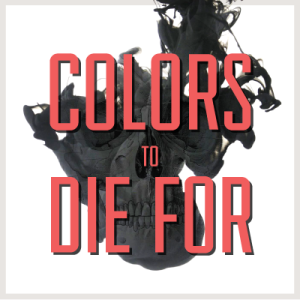Reviewed by Mary McLaughlin, Special Education Teacher; M.S. SpEd
The Dangerous Impact of Food Coloring
Americans are now eating 5 times more food dye than in 1955.
Many parents have observed their child’s behavior improve drastically when taken off food dyes, especially Red #40. Because of this widespread anecdotal evidence, the editors at Special Education Degree decided to do an investigative report on the negative effects of food dyes in human beings.
The hidden dangers of food coloring dyes:
Blue #1 Brilliant Blue
Known Dangers:
Caused kidney tumors in mice
May induce an allergic reaction in individuals with pre-existing asthma
Commonly found in: baked goods, beverages, candies, cereal
Blue #2 Indigo Carmine
Known Dangers:
Causes significant occurrence of tumors, particularly brain gliomas, in male rats
Commonly found in: beverages, candies, dog food
Citrus Red #2
Known Dangers:
Toxic to rats and mice at modest levels
Bladder and other tumors found in mice
Labeled “possibly carcinogenic to humans”by the IARC
Commonly found in: skin of Florida oranges
Green #3 Fast Green
Known Dangers:
As a food dye it is prohibited in the EU and some other countries
Caused significant increases in bladder tumors in male rats
Commonly found in: beverages, candies, ice cream, cosmetics
Red #40 Allura Red
Known Dangers:
Accelerates the appearance of immune system tumors in mice
Suspected trigger of hyperactivity in children
Causes allergy-like reactions in some people
Commonly found in: beverages, candies, cereal, cosmetics
Red #3 Erythrosine
Known Dangers:
Suspected trigger of hyperactivity in children
Thyroid carcinogen in animals
Issued a partial ban by the FDA in 1990
Commonly found in: baked goods, candies, sausage, maraschino cherries
Yellow #5 Tartrazine
Known Dangers:
Can cause allergy-like reactions
May cause mild to severe hypersensitiviy reactions
Commonly found in: baked goods, candies, cereal, beverages
Yellow #6 Sunset Yellow
Known Dangers:
May cause hyperactivity in some children
Causes adrenal tumors in animals
Commonly found in: baked goods, sausage, cereal, cosmetics
“Our daughter Emma is a completely different person since we cleared her diet of food dye. No more meltdowns or shouting matches. And we just realized that her reading, writing, and math have accelerated tremendously in these few short weeks. Coincidence?”
Alternatives to Artificial Dyes Include:
Beets
Carrots
Spinach
Pumpkin
Berries
Red cabbage
Turmeric powder
Saffron powder
Paprika
Natural dyes do not have as concentrated color as artificial ones. Thus, more must be used, which may affect taste. They’re also more sensitive to heat, so colors may vary.
Now, 30%-40% of the nation’s food is colored with naturally-derived food dyes.Organic food has no added dyes or preservatives.
On food labels, artificial dyes are often identified by their alternative names.
Food Dyes and Children
In 2009, Great Britain asked its food companies to stop using artificial dyes in food.They worried about the link between artificial dyes and hyperactivity and cancer.
Today, companies like Kellogg’s and Kraft Foods no longer use artificial dyes in their UK products.
Dyes Red #40 and Yellow #5 have come under fire. However, the FDA has found no conclusive evidence to link these dyes to child behavior or ADHD.
Researchers at Southampton University found that consuming certain synthetic dyes with preservative sodium benzoate increased hyperactivity in kids ages 3-9. Those studied had never been diagnosed with ADHD.
A US study published in Science found that children score worse on tests that measure after consuming a food-dye blend than when they drank a placebo
A U.S. study published in Science found that when children who scored high on a scale measuring hyperactivity consumed a food-dye blend they performed worse on tests that measured their ability to recall images than when they drank a placebo.
Sources:
http://www.doctoroz.com/videos/food-dyes-are-they-safe
http://www.webmd.com/add-adhd/childhood-adhd/food-dye-adhd
http://www.livestrong.com/article/487389-harmful-effects-of-red-food-coloring/
http://www.thedailygreen.com/healthy-eating/eat-safe/artificial-food-colorings-health-effects
http://foodmatters.tv/articles-1/the-dark-side-of-food-colors-plus-natural-coloring-alternatives








